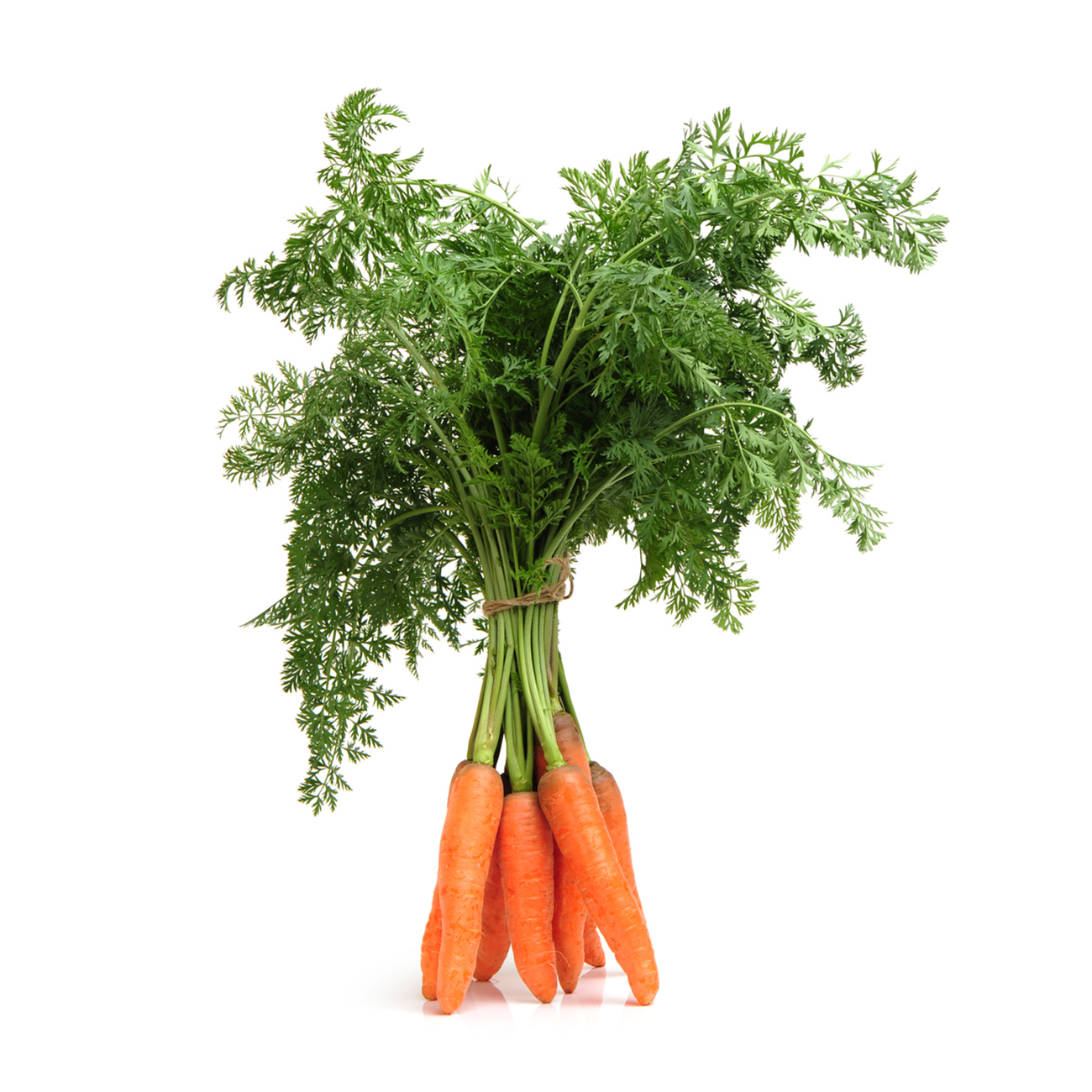Carrots
Super versatile and excellent for dipping.
Alternative Name
N/A
Scientific Name
Daucus carota
Health benefits
Bones & joints Brain & nervous system Heart Immune system Skin
Carrots are a root vegetable, most commonly recognised with orange flesh and green leaves. They can also be white, yellow, red, or purple. It's best to try each colour raw and cooked to determine which varieties you prefer. Carrots are related to parsnips, fennel, parsley, anise, caraway, cumin and dill.
-
Harvesting
Carrots should be firm; straight with a uniform taper from shoulder to tip; bright orange; have little or no residual hairiness from lateral roots; be without visible green shoulders from exposure to sunlight during the growth phase; have low bitterness from terpenoid compounds; have high moisture content and high reducing sugars. Quality defects include lack of firmness, non-uniform shape, roughness, poor colour, splitting or cracking, sunburn, and poor quality of tops or trimming. Bunched carrots are highly perishable due to the presence of the tops. Good quality is generally maintained for only 8–12 days. Bruising, shatter-cracks and tip-breakage are signs of rough handling.Postharvest storage temperature
Carrots should be stored at 0°C to prevent decay, sprouting and wilting. Freezing injury will likely result at temperatures of -1.2°C or lower. Frozen carrots generally exhibit an outer ring of water-soaked tissue, viewed in cross section, which blackens in 2-3 days. Sprouting will result in wilting, shrivelling, or rubberiness of the carrot tissue due to dessication.Controlled atmosphere storage
Controlled atmosphere is of limited use for carrots and does not extend postharvest life of carrots beyond that in air. CO2 concentrations above 5% have been shown to increase spoilage. Low oxygen concentrations, below 3%, generally results in increased bacterial rot.Ethylene sensitivity
Exposure to ethylene induces the development of a bitter flavour due to the formation of isocoumarin. Exposure to as little as 0.5ppm exogenous ethylene will result in perceptible bitter flavour. Thus, carrots should not be mixed with ethylene-producing commodities.Humidity storage
High relative humidity (98–100%) is essential to prevent dessication and loss of crispness. Free moisture from the washing process or unevaporated condensation, common with plastic bin-liners (and due to fluctuating temperatures) will promote decay. White blush, due to dehydration of cut or abrasion-peeled surfaces, has been a problem on fresh-cut carrots. Sharp cutting blades and residual free moisture on the surface of the processed carrots will significantly delay the development of the disorder.Disease & infection
The most prominent postharvest disease concerns for carrots are grey mould, watery rot, relative Rhizopus rot, bacterial soft rot, induced by Erwinia carotovora subsp. carotovora and sour rot. Proper handling, low temperature storage and transportation conditions are the best methods to minimise losses. -
Peel or trim greens before use. Place in water container and keep in fridge.
Nutrition information
| Qty per serve | % RDI per serve | Qty per 100g | |
|---|---|---|---|
| Energy | 99 kJ | 1% | 132 kJ |
| Protein | 0.6 g | 1% | 0.8 g |
| Fat, total | 0.1 g | 0% | 0.1 g |
| – saturated | 0.0 g | 0% | 0.0 g |
| Carbohydrate | 3.8 g | 1% | 5.0 g |
| – sugars | 3.8 g | 4% | 5.0 g |
| Dietary fibre, total | 2.9 g | 10% | 3.9 g |
| Sodium | 30 mg | 1% | 40 mg |
| Vitamin A (from carotenoids) | 987 µg RE | 133% RDI | 1316 µg RE |
| Vitamin B6 | 0.25 mg | 16% RDI | 0.33 mg |
| Vitamin C | 4.5 mg | 11% RDI | 6.0 mg |
| Vitamin K | 9.9 µg | 12% ESADDI | 13.2 µg |
| Potassium | 209 mg | - | 279 mg |
Note: % RDI are based on an average adult diet of 8700 kJ. Your daily intakes may be higher or lower depending on your energy needs. RDI = Recommended Dietary Intake; ESADDI = Estimated Safe and Adequate Daily Dietary Intake.

You might also like
Veggy tip
If carrots are cooked whole and then cut up, they are noticeably sweeter than when cut up first because less sugars are lost during the process.



